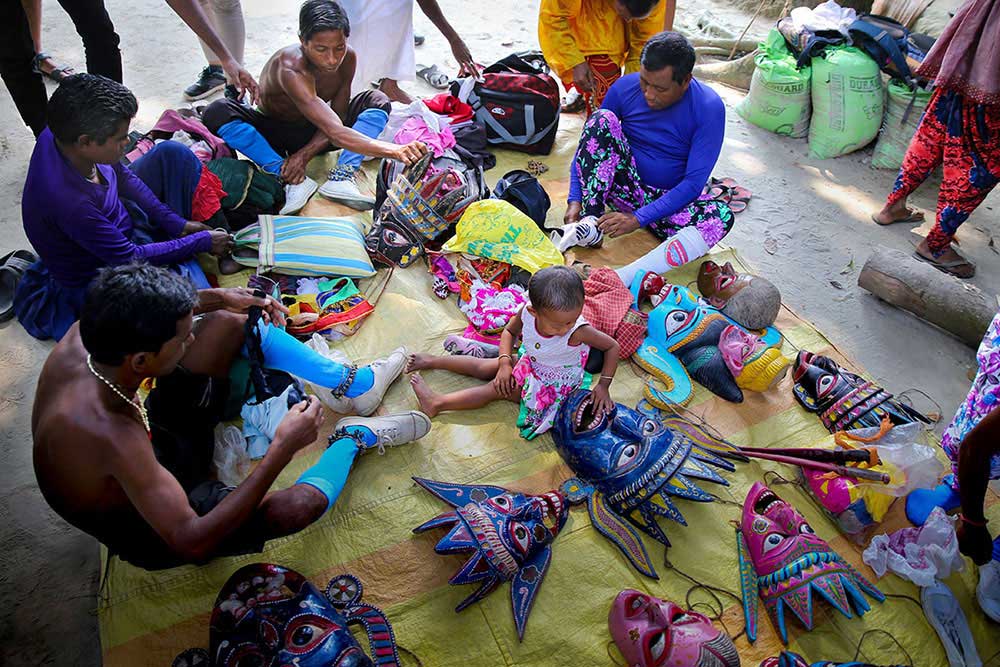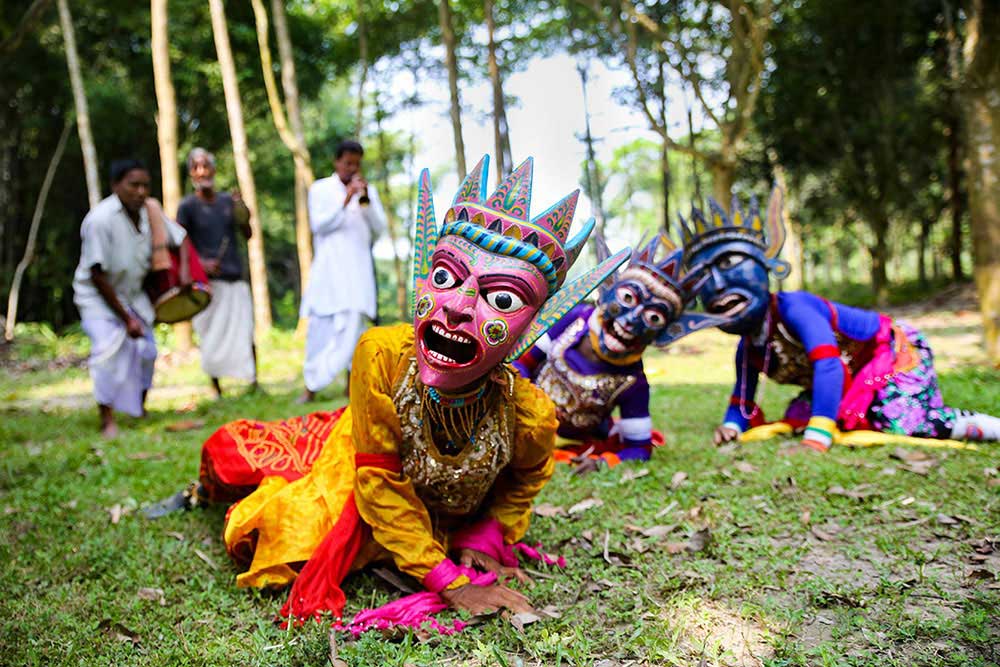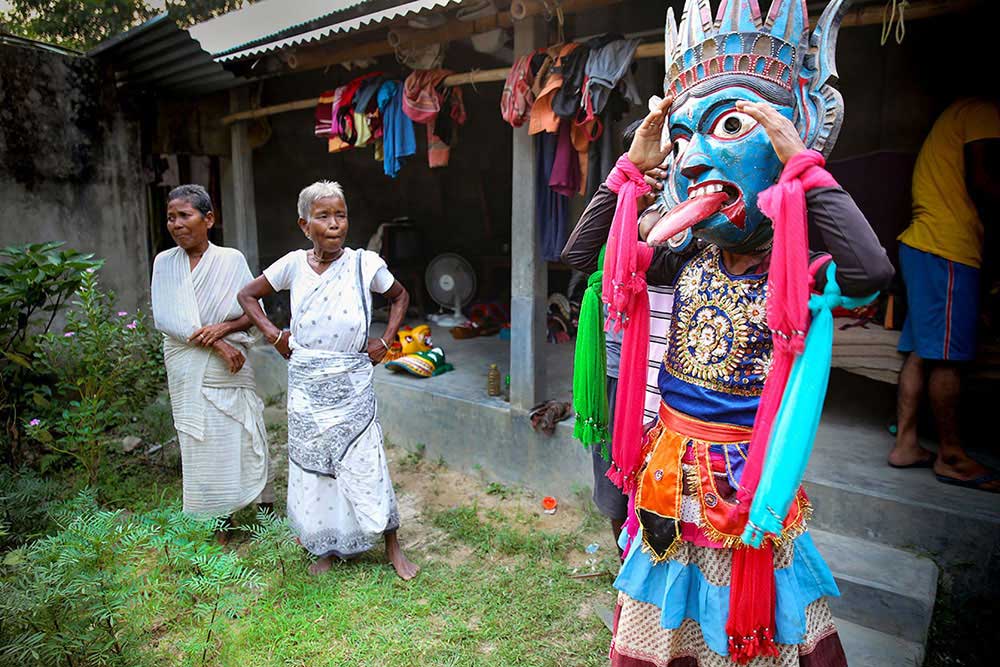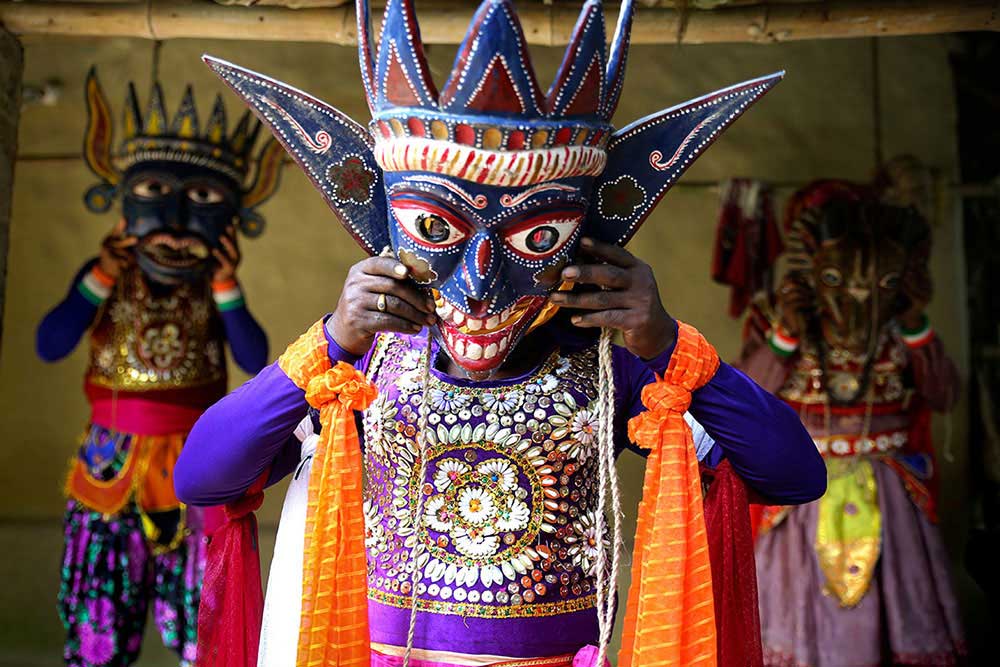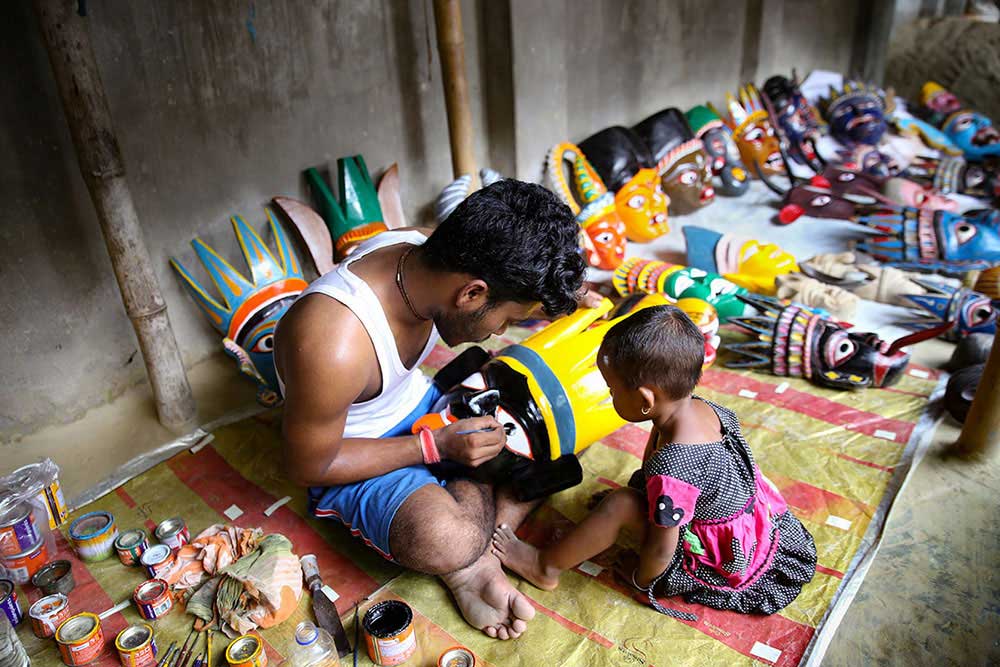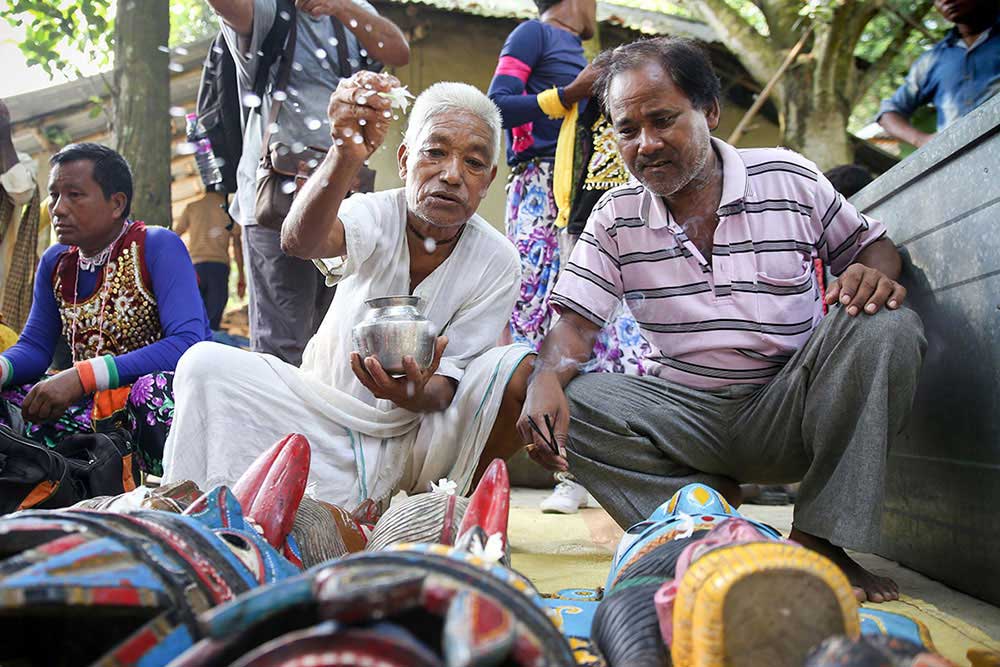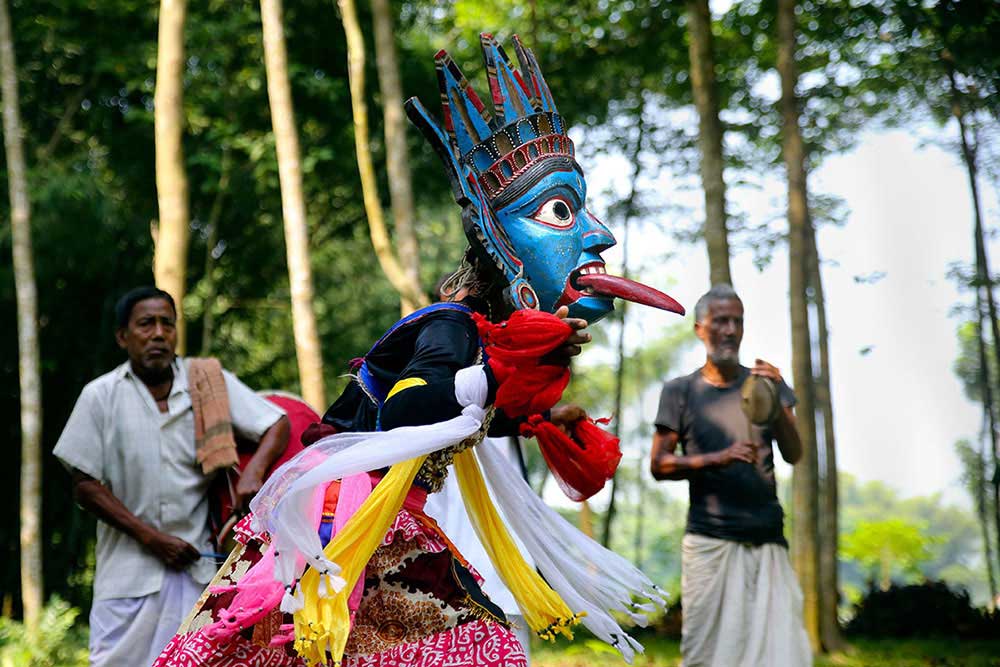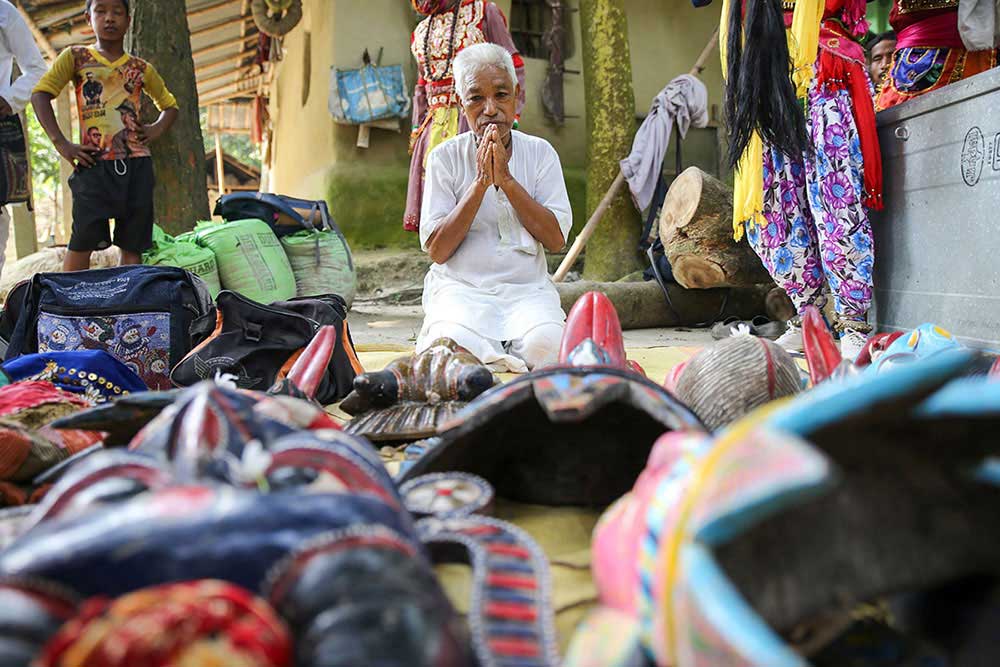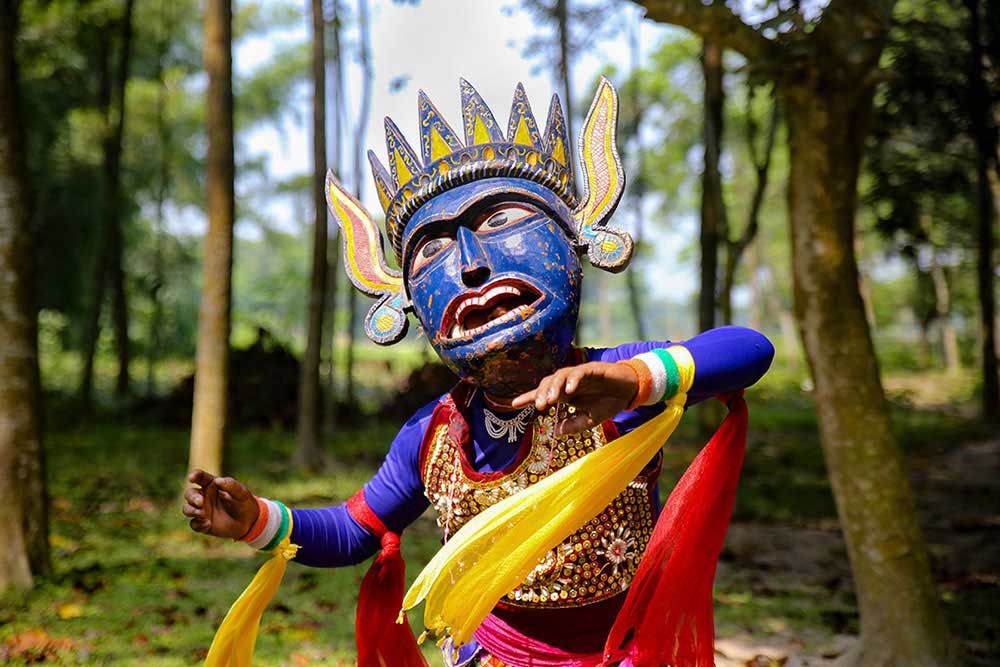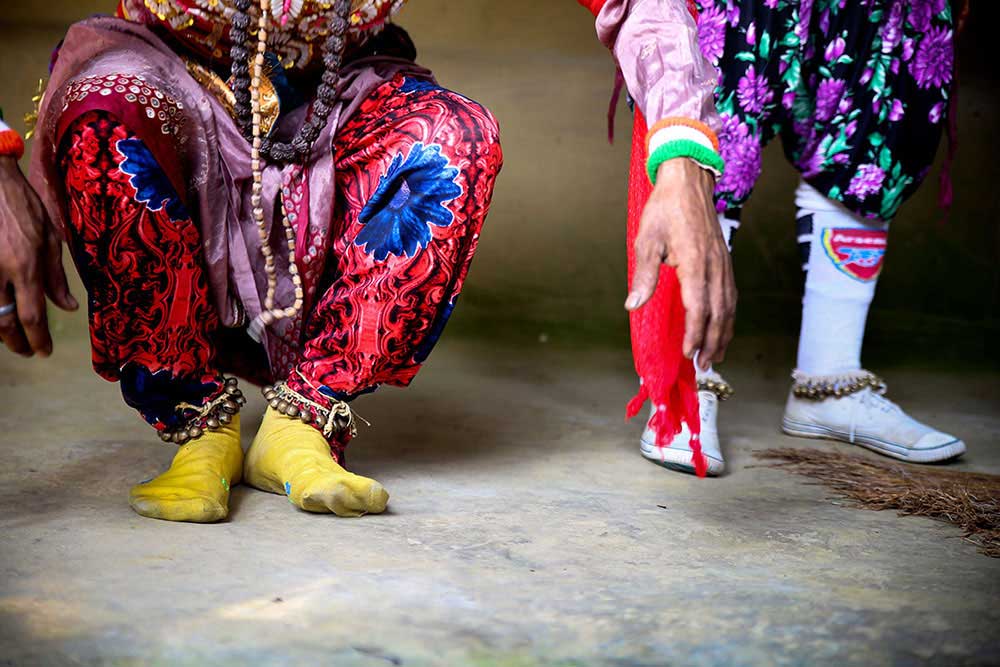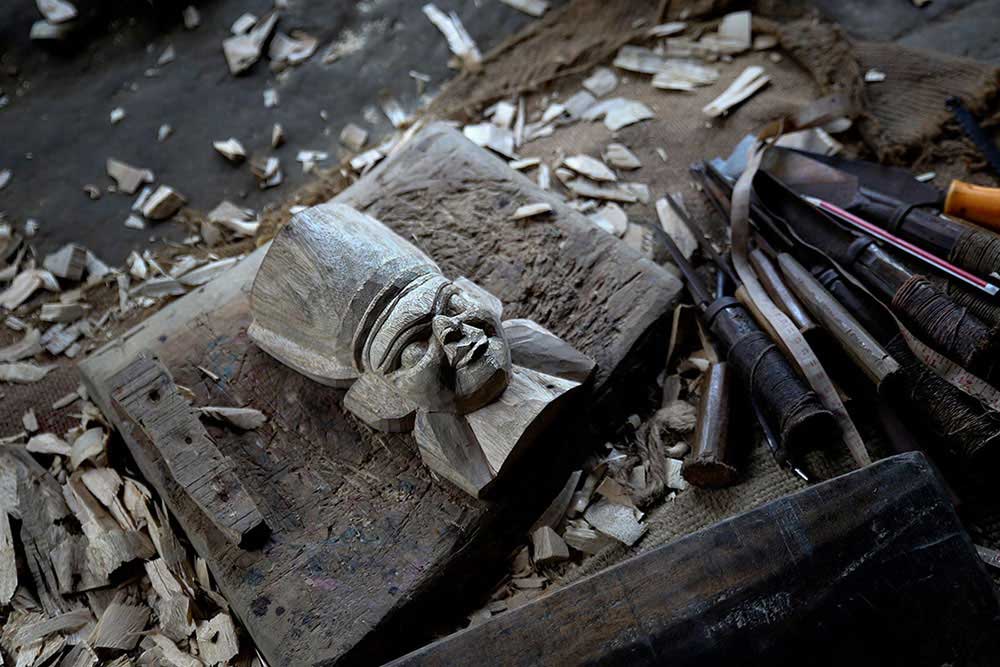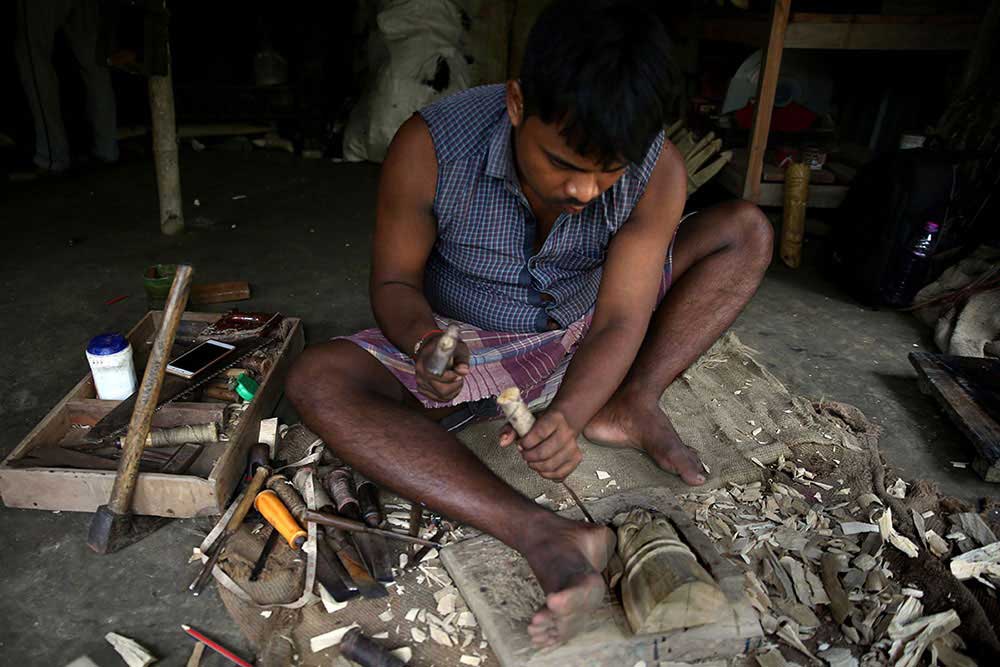Gomira” the name has been derived from the colloquial form of the word “Gram-Chandi” or the female deity who is the protective force of the village.
The exact origin of the dance form is not traceable as it’s lost in the realms of time. Another section believes that the word “Gomira” has been derived from the word ‘Gamar’, the wood that is mainly used to make the masks. The Gomira dance is also part of the ritualistic dance forms that prays the Adi-Shakti or the primordial energy. Thus Gomira also celebrates Shaktism or worships Lord Shiva just like other dance forms like Gajan and Neel puja .
The festival is celebrated mostly at the end of Bengali year . Gomira is actually an animistic tradition in which the primitive people pay their homage to different Gods in order to attain security. The Gomira dance have extensive .The festival is celebrated mostly at the end of Bengali year by use of wooden masks. The artists wear various masks which depicts various incarnations of Kali, Nrisingha and ghosts.
Though Gomira is celebrated in jalpaiguri and Dinajpur, it’s originated from Malda. Traditionally the Gomira starts four days priour to the end of Chaitra and ends in the first day of Baisakh. However the tradition is not followed strictly now a days and it starts on the last day of chaitra at Kushmandi. The wooden masks are the symbol of the richness of the craftsmanship of the local people. Masks of various forms of kali,the rakshashas(deamons) animals are used. Nrisingha masks are very common. [Official Website]



